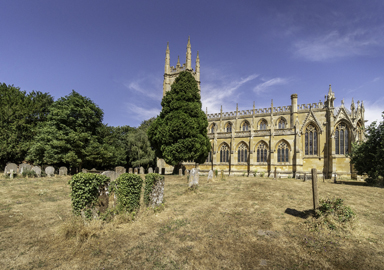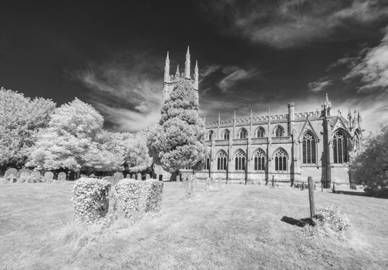Comparisons Between IR Converted Cameras with Different Filter Depths
Clive R. Haynes FRPS


During one of my Infrared Workshop sessions in conjunction with PermaJet, several participants took the same two subjects from more or less the same angle. This allowed us to compare and contrast differences between camera makes, models and the IR filter used. As expected the results show quite an array of tonal differences.
The test was a ‘real world’ experiment where one had to allow for differences of lens manufacture, focal length, standpoint and camera handling. However, the lighting conditions were common throughout and the results are adequate for general comparison and evaluation purposes.
Each RAW file image was initially opened in Lightroom and adjusted for optimum contrast.
The results illustrate the following:
1 Original RAW file (Lightroom)
2 Black & White (Lightroom)
3 Original RAW file into Photoshop for ‘Channel-Swap’
4 'Channel Swap’ converted to Black & White (using B&W Adjustment Layer)
Camera and Filters
Canon 20D, 720nm
Fuji XT2, 590nm
Fuji XE1, 720nm
Fuji XE1, 830nm
Nikon D50, 720nm
Nikon D3s, 720nm
Nikon D610, 720nm
Sony A350, 720nm
Sony A6300, 720nm
From these results several things are evident.
The differences between IR filter depth
The age and model of the camera
The type of camera sensor array
The range of ‘false colour’ tone revealed in the original RAW file and in the subsequent ‘Channel Swap’ and how this can be interpreted in terms of black & white.
Note 1: the first four comparative images for each subject, after the initial RAW stage, are presented 'straight' without additional adjustments for light, shade or contrast whether general or selective. The tonal range at each stage could be managed for personal expression and preference.
Note 2: the final two images for each subject have received additional editing to reveal the potential of the picture. The two methods are a TopazLabs plug-in (Microcontrast improvements) and the recovery of so-called 'false colour' by swapping the image to Lab Mode (in Photoshop). The examples of 'false colour' certainly won't suit all tastes and they're presented to illustrate some of the fundamental differences between the cameras, IR filter depth and the different sensor arrays. Typically the older camera sensors present a wider range of ('false') colour as revealed in 'channel-swapping' and Lab Mode.
Note 3: Chromatic Aberration: This can present a problem and is particularly relevant for 'False Colour' processing. Click on the Nikon D610 link below as the description includes screen-grabs about chromatic aberration.
The test also shows that there are no definitive rights and wrongs, only personal preferences.
The following pages illustrate the results.
Click 'Next' below.
Alternatively you can select from the direct links, listed in page order, below.